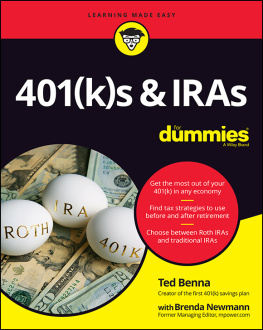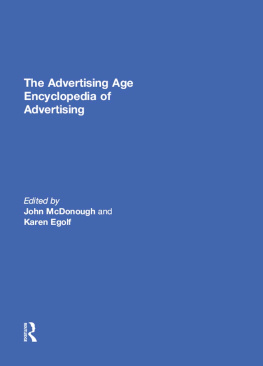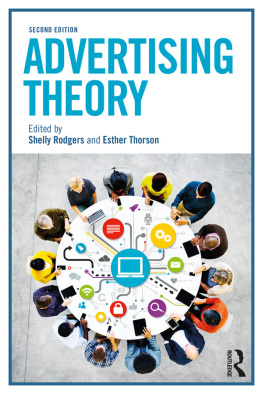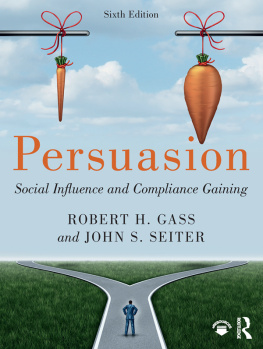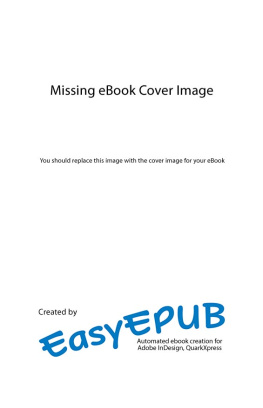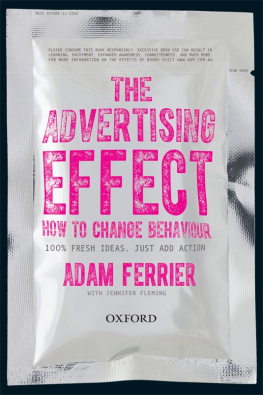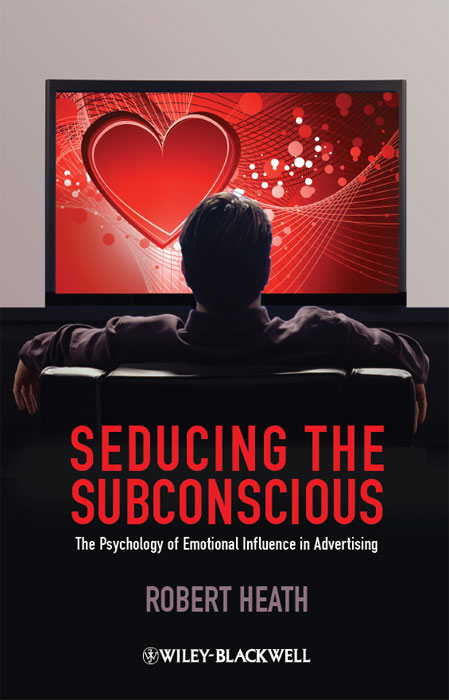This edition first published 2012
2012 Robert Heath
Wiley-Blackwell is an imprint of John Wiley & Sons, formed by the merger of Wiley's global Scientific, Technical and Medical business with Blackwell Publishing.
Registered Office:
John Wiley & Sons Ltd, The Atrium, Southern Gate, Chichester,
West Sussex, PO19 8SQ, UK
Editorial Offices:
350 Main Street, Malden, MA 02148-5020, USA
9600 Garsington Road, Oxford, OX4 2DQ, UK
The Atrium, Southern Gate, Chichester, West Sussex, PO19 8SQ, UK
For details of our global editorial offices, for customer services, and for information about how to apply for permission to reuse the copyright material in this book please see our website at www.wiley.com/wiley-blackwell .
The right of Robert Heath to be identified as the author of this work has been asserted in accordance with the UK Copyright, Designs and Patents Act 1988.
All rights reserved. No part of this publication may be reproduced, stored in a retrieval system, or transmitted, in any form or by any means, electronic, mechanical, photocopying, recording or otherwise, except as permitted by the UK Copyright, Designs and Patents Act 1988, without the prior permission of the publisher.
Wiley also publishes its books in a variety of electronic formats. Some content that appears in print may not be available in electronic books.
Designations used by companies to distinguish their products are often claimed as trademarks. All brand names and product names used in this book are trade names, service marks, trademarks or registered trademarks of their respective owners. The publisher is not associated with any product or vendor mentioned in this book. This publication is designed to provide accurate and authoritative information in regard to the subject matter covered. It is sold on the understanding that the publisher is not engaged in rendering professional services. If professional advice or other expert assistance is required, the services of a competent professional should be sought.
Library of Congress Cataloging-in-Publication Data
Heath, Robert, 1947
Seducing the subconscious : the psychology of emotional influence in advertising / Robert Heath.
p. cm.
Summary: Seducing the Subconscious reveals how this brave new advertising world works, using illustrative examples of advertising campaigns that have been hugely successful without anyone quite being able to recall what they were trying to communicate Provided by publisher.
Includes bibliographical references and index.
ISBN 978-0-470-97488-9 (hardback)
1. AdvertisingPsychological aspects. I. Title.
HF5822.H37 2012
659.1019dc23
2011043014
A catalogue record for this book is available from the British Library.
Wiley also publishes its books in a variety of electronic formats. Some content that appears in print may not be available in electronic books.
For Pippa
Foreword
Advertising may be described as the science of arresting the human intelligence long enough to get money from it.
Stephen Butler Leacock
Crown's Book of Political Quotations (1982)
When people are asked about advertising, they often find it quite difficult to remember any. If pressed, they usually come up with famous old campaigns like I'd like to buy the world a Coke , or American Express Don't leave home without it, or The Marlboro Cowboy, or the Jolly Green Giant. In the UK they might mention the Cadbury's Smash Martians, the Guinness Surfer, Heineken Refreshes the parts other beers cannot reach, or the Gold Blend couple.
There then usually follows a discussion about how much advertising influences us. Most of us like to think that it doesn't influence us unless we are stupid enough to let it. We believe this because we assume advertising works by persuasion, and persuasion is associated with others (typically our parents) trying to argue us into doing something we don't want to do. Persuasion is a rational verbal process, so if we don't hear or remember what an advertisement says, how can we be persuaded by it?
Many experts agree that advertising isn't nearly as persuasive as it claims it is. In the opening paragraph of his book Advertising: The Uneasy Persuasion , Michael Shudson writes:
Advertising is much less powerful than advertisers and critics of advertising claim, and advertising agencies are stabbing in the dark much more than they are practicing precision microsurgery on the public consciousness. (Shudson 1984: xiii)
I agree with Shudson. Having worked in nine different advertising agencies over a period of 23 years, I can testify to just how much chance, serendipity, and stabbing in the dark is involved in the creation of great advertising campaigns. Admen may like to masquerade as experts in persuasion, but in many ways they are little more than gifted amateurs. I'd say the average young person on a date is many times more adroit in the art of persuasion than the average creative team.
But if advertising isn't very good at persuading us, how come those companies that use advertising are amongst the most successful in the world? I think the explanation is that advertising has ways of influencing us we are not aware of, and that dont involve persuasion. In this matter Shudson and I are also in agreement, for while he asserts that ads are not very persuasive, he also acknowledges that:
This does not mean ads are ineffective. In fact television ads may be more powerful precisely because people pay them so little heed that they do not call critical defences into play. (Shudson 1984: 4)
Shudson's source for this idea was the psychologist, Herb Krugman. Krugman's theories caused something of a stir in the 1970s, mainly because they suggested that TV advertising received low levels of attention. This was seen by the ad industry as being too difficult a pill to swallow, and Krugman's ideas were pretty much ignored until the start of the twenty-first century, when I wrote a monograph called The Hidden Power of Advertising (Heath 2001).
The Hidden Power of Advertising was based on Krugman's idea that TV advertising could influence us even when processed inattentively. Since its publication in 2001 there has been a steady growth in the number of people who accept that advertising subjected to low attention processing can be effective. That said, many of those who work in the ad industry still cling to the notion that advertising works only through persuasion, and works best at high attention.
Although my monograph referred extensively to psychology, it was not seen by academia as being rigorous enough. In order to overcome this hurdle I elected to become an academic myself. I studied for and was awarded a PhD, and I read and wrote articles in academic journals. But the more I researched the subject, the more it struck me that this other way in which advertising works, this alternative to persuasion, was quite possibly much more influential than persuasion. Many people have expressed worries about how advertising might be influencing us without our knowledge, might somehow be manipulating our behavior subconsciously; and now I was finding that their worries were not entirely without foundation.
This alternative way in which advertising works is what I call Subconscious Seduction. I should stress this has nothing to do with the subliminal effects mentioned in Vance Packard's famous book The Hidden Persuaders. Packard's claims about messages exposed below the threshold of perception were based on a hoax, and there is no evidence at all that advertising can influence us in this way. No, perhaps even more worrying is that advertising's ability to seduce our subconscious uses elements that are in our full view and easy for us to discern. The problem is that although we are able to perceive and attend to these elements, we mostly choose not to.




